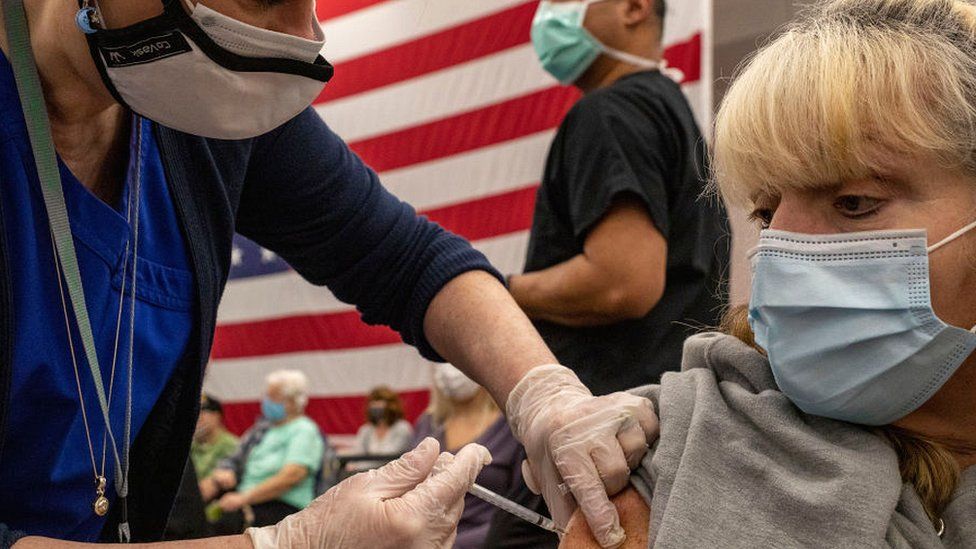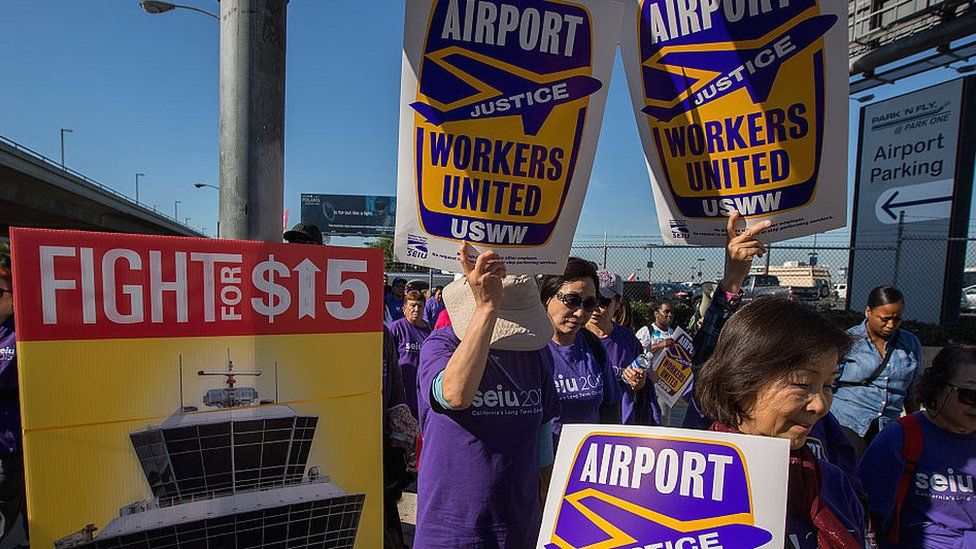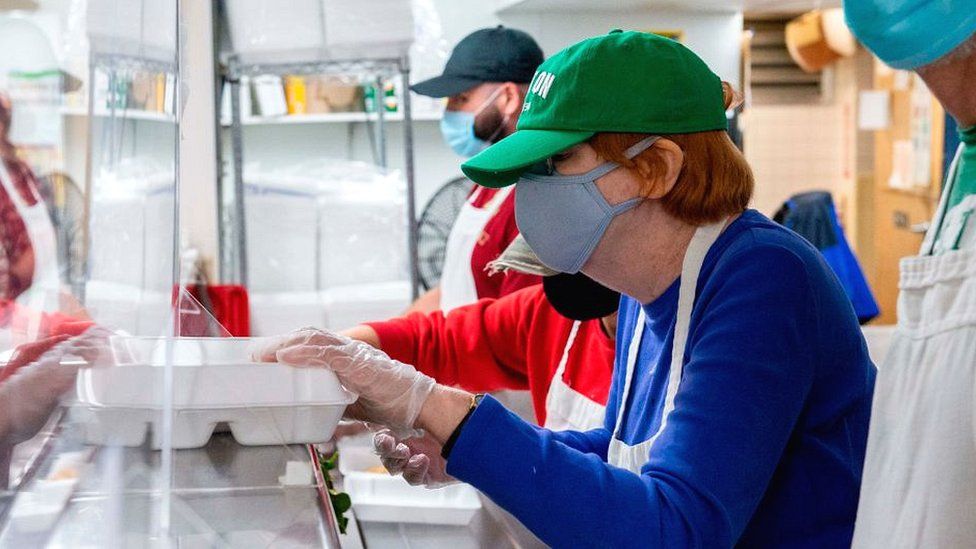President Biden: Fact-checking his first month in office
 image copyrightAFP
image copyrightAFPDuring his first four weeks in the White House, President Joe Biden has been talking about the challenges facing the US - from coronavirus to the economy - and has contrasted his policies with those of his predecessor, Donald Trump.
We've fact-checked some of the claims he's been making.
Claim: "When I took office just three weeks ago this country did not have a plan or enough vaccines"
President Biden has repeatedly criticised the previous administration's vaccine rollout.
But it's not correct to say the US "did not have a plan" under Mr Trump.
It published a vaccination plan back in September focusing on its strategy to distribute the vaccine to states.
However, as we've reported previously, there were complaints about how it was implemented, and about a lack of funding from the federal government which led to logistical problems at the local level once vaccines had been delivered.
And some states appealed for more supplies.
 image copyrightGetty Images
image copyrightGetty ImagesWhen it comes to whether there were "enough" vaccines, the Trump administration secured 400 million doses from Pfizer-BioNTech and Moderna (the two vaccines currently approved in the US). All of these doses are set to be delivered by July.
That's not enough to fully vaccinate the entire US population (both vaccines require two doses), but it allowed the US to ramp up its vaccination programme faster than many other developed countries.
When Mr Trump left office in January, the US had vaccinated more than 16 million people - the fourth highest per capita after Israel, the UAE and the UK.
The Trump administration also secured contracts for a total of 500 million doses from Johnson & Johnson, Novavax and AstraZeneca - vaccines which are yet to be approved in the US, but are likely to come on stream later in the year.
Claim: White supremacists are the "greatest threat" in America
Answering a question at a town hall event in Milwaukee about the threat from white supremacists, President Biden said they were the "most dangerous people" in America and posed the greatest domestic terror threat.
This claim is supported by the US Department of Homeland Security - its annual assessment last year said that violent white supremacy was the "most persistent and lethal threat" in the US.
There has been a significant rise in the number of violent far-right attacks and plots in the US over recent years, according to the Center for Strategic and International Studies.
During the first eight months of 2020, most domestic terror plots and attacks came from the far-right - substantially more than from far-left or militant Jihadist groups.
Claim: "I do think that we should have a minimum wage... at $15 an hour…and all the economics shows if you do that, the whole economy rises"
Raising the US minimum wage to $15 (£10) an hour by 2025 was one of President Biden's key campaign pledges - the current national rate is $7.25 an hour.
 image copyrightGetty Images
image copyrightGetty ImagesAsked for evidence of his claim that "all the economics" shows that this would lift the US economy, the White House sent BBC Reality Check a list of economic studies supporting raising the minimum wage.
But there are other studies which say the increased wage costs could result in businesses hiring fewer people.
The Congressional Budget Office - a federal agency providing economic information to the US government - estimated that raising the minimum to $15 by 2025 could increase the wages of 17 million workers but also lead to a loss of 1.4 million jobs.
But another study, for the UK government in 2019, which looked at seven US states that had already moved to gradually increase their minimum wage, found "a very muted effect of minimum wages on employment".
Claim: "We have so many millions of people working 40 hours a week...and some with two jobs and they're still below the poverty line"
The latest poverty figures, for 2019, show about 2.3 million people were in poverty in the US despite maintaining at least one full-time job throughout the year.
Poverty is calculated using the nationwide census to judge if a family's total income is less than their needs.
If it is, then every person in that family is considered to be in poverty.
Claim: "$8 trillion in deficit spending over the past four years - much of it having gone to the wealthiest people in the country"
The deficit is the amount of government spending that exceeds revenue from things such as tax, over the course of a year.
The Committee for a Responsible Federal Budget (CRFB) directed BBC Reality Check to its research on deficits resulting from tax and spending signed into law by Mr Trump during the past four years.
 image copyrightAFP
image copyrightAFPIt found $4.7tn in deficits before the pandemic and a further $3.4tn from a range of Covid relief packages.
But not all of this spending has happened yet.
Government spending is distributed widely across departments, on healthcare programmes for poorer Americans and towards the military budget.
Funding for those affected by the pandemic went to people of varying incomes, including business owners and the unemployed.
When he talked about "much of it having gone to the wealthiest", President Biden was referring to sweeping tax cuts passed in 2017 (estimated to cost close to $2tn over a 10-year period) - according to government officials.
And independent studies have found high earners - the top 20% of the population - have, so far, benefited the most from these.





No comments